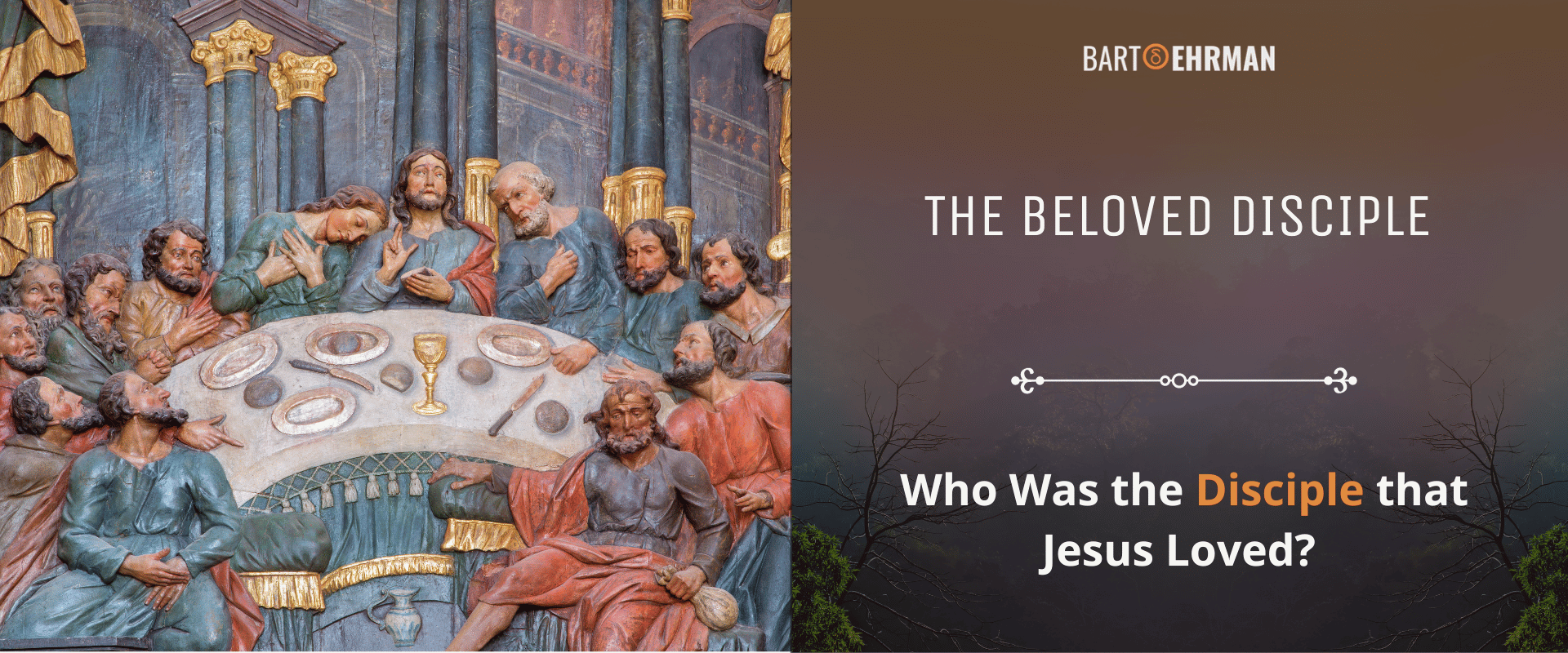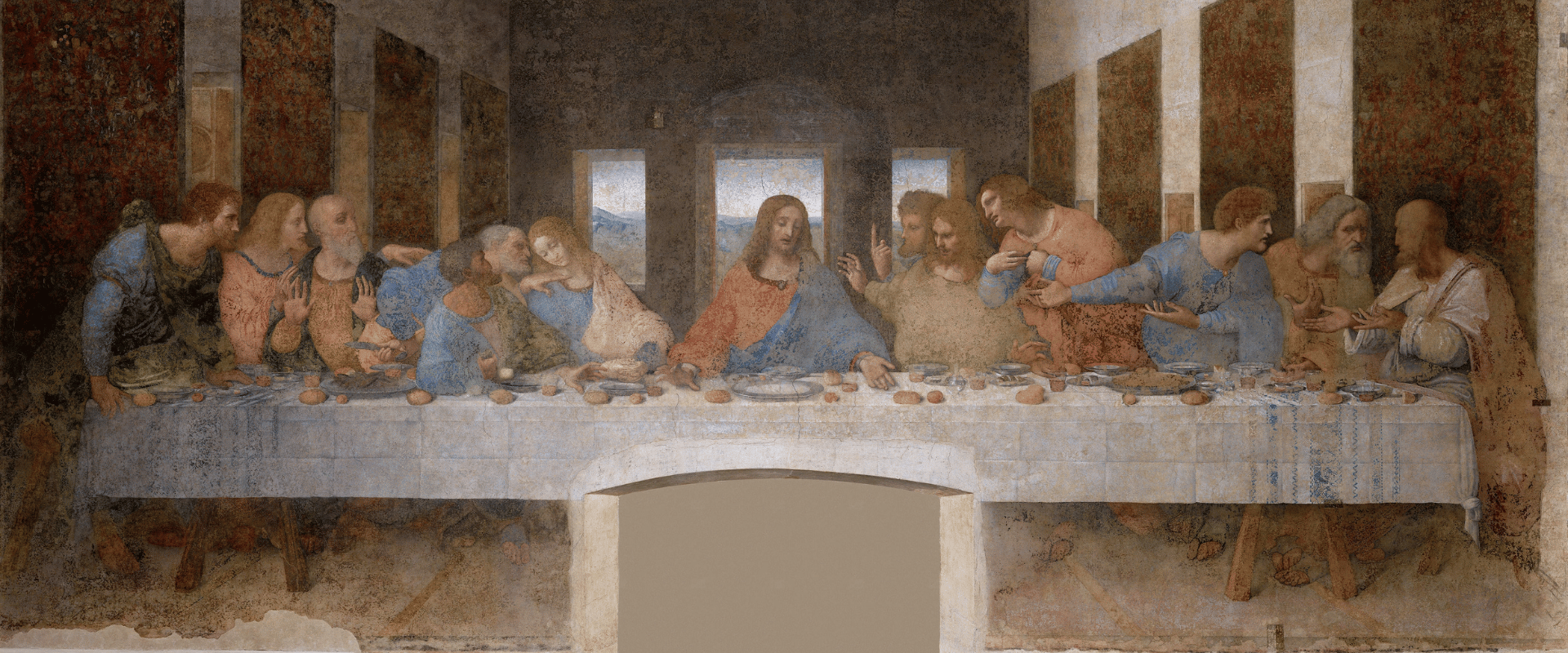The Beloved Disciple: Who Is the Disciple that Jesus Loved?

Written by Joshua Schachterle, Ph.D
Author | Professor | Scholar
Author | Professor | BE Contributor
Verified! See our editorial guidelines
Verified! See our guidelines
Date written: October 16th, 2023
Disclaimer: The views and opinions expressed in this article belong to the author and do not necessarily match my own. - Dr. Bart D. Ehrman
Who is the disciple whom Jesus loved in the Gospel of John? The Gospel’s author says that his story of Jesus’ life, which is quite different from that in the Synoptic Gospels, is based on the testimony of this disciple. Here I’ll explore the identity of this disciple and what we can know about him from the Gospel of John.

What Do We Know about the Gospel of John?
John is the last of our canonical Gospels to be written. It was composed sometime between 90-110 CE, at least sixty years after Jesus’ death. This makes it highly unlikely that the author was an eyewitness to the events he describes.
In addition, Joseph Kelly notes that because the Gospel is written in good, grammatical Greek, John the Apostle, an Aramaic-speaking fisherman, probably couldn’t have written it.
Instead, scholarly consensus has long held that John was produced by and for a separate community of Christians. They’re often called the Johannine community, referring to the Gospel of John.
The Gospel of John shares its theology with other books of the Bible called 1st, 2nd, and 3rd John and also known as the Johannine epistles, although they were probably not written by the author of the Gospel.
That theology includes Jesus as the preexistent revelation of God, an idea not contained in the Synoptic Gospels. This may indicate that the Johannine community was separate from other Christian groups.
So where does the disciple whom Jesus loved fit into this Gospel and its unique theology?
Who Is the Beloved Disciple in the Gospel of John?
The beloved disciple is mentioned six times in John, but not mentioned in any other Gospels. Before looking at those references, I want to start with an important fact: he is never named. This is strange, since the other disciples are named, even the infamous Judas Iscariot! Why would his name be left out?
It may be that this disciple was actually a later community leader who is projected back into Jesus’ story as a mark of his authority.
On the other hand, scholar Ismo Dunderberg argues that the beloved disciple may simply be a creation of the author of John. If so, Dunderberg believes that in the narrative of John’s Gospel, God gave his son as a gift to the world and the beloved disciple was a character invented to transmit this revelation to future generations.
John, like all the other Gospels, was written anonymously. However, it came to be identified with the Apostle John, one of the sons of Zebedee, by the 2nd century. Because of this, and because of its unique references to the beloved disciple, readers came to identify the beloved disciple as John and to believe that he had written the Gospel. Again, though, this is never stated in John.
Let’s look at how the beloved disciple is referred to in John.
What Can We Learn about the Beloved Disciple from the Gospel of John?
In John 13, Jesus and his disciples are eating what will later be called the Last Supper. When Jesus tells the disciples that one of them will betray him, this scene unfolds:
One of his disciples—the one whom Jesus loved—was reclining close to his heart; Simon Peter therefore motioned to him to ask Jesus of whom he was speaking. So while reclining next to Jesus, he asked him, “Lord, who is it?”
Notice here that the beloved disciple is seated in the place of honor right next to Jesus. More importantly, though, Peter asks this disciple to ask Jesus who will betray him. This is the first of several scenes in which Peter and the beloved disciple seem to be in competition for Jesus’ favor. In other words, Peter sees himself as less important, or at least not as close, to Jesus.
According to John 19, the beloved disciple is also present at the crucifixion:
When Jesus saw his mother and the disciple whom he loved standing beside her, he said to his mother, “Woman, here is your son.” Then he said to the disciple, “Here is your mother.” And from that hour the disciple took her into his own home.
Here, the disciple goes from being a follower of Jesus to becoming part of Jesus’ family, an adopted brother, if you will. Additionally, the beloved disciple seems to be the only one of Jesus’ disciples present at the cross.
In John 20, when Mary Magdalene tells the disciples about Jesus’ empty tomb, the beloved disciple and Peter run to check it out, with the unnamed disciple arriving first (although Peter enters the tomb first). This may also indicate the disciple’s favored status.
After Jesus’ resurrection in John 21, Jesus appears on the shore while Peter, the beloved disciple, and several others are fishing. It is the beloved disciple, however, who recognizes Jesus first.
In the same chapter, Jesus and Peter discuss the beloved disciple. Jesus says this about him:
“If it is my will that he remain until I come, what is that to you? Follow me!” So the rumor spread among the brothers and sisters that this disciple would not die. Yet Jesus did not say to him that he would not die, but, “If it is my will that he remain until I come, what is that to you?”
It would seem that there had been a rumor that the beloved disciple would not die at all. The author here refutes that rumor. This probably means that some in the Johannine community believed that their leader wouldn’t die before the end of the age and were then confused when he did die. This may have been an explanation for them.
The final reference, also from chapter 21, is perhaps the most significant. In referring to the beloved disciple, the author writes this:
This is the disciple who is testifying to these things and has written them, and we know that his testimony is true.
Note that it doesn’t say that the beloved disciple is writing this story, but rather that the author is relying on his testimony. In other words, the beloved disciple is not the author of the Gospel of John but rather the author’s source (perhaps written).
It would seem that the author of this Gospel sees this unnamed beloved disciple as the originator of his theology and/or devotional group.

Conclusion: What Can We Know about the Disciple Whom Jesus Loved?
The “disciple” whom Jesus loved was probably not one of the original disciples. Given the huge span of time between Jesus’ death and the writing of the Gospel of John, it is unlikely that he was one of Jesus’ original disciples. In addition, the Gospel never names him at all, and one would think that such an important disciple of Jesus would be named.
He may in fact have been the leader of the Johannine community or even an invention of the author of John’s Gospel.
He also did not write the Gospel of John. The Gospel author says that he is relying on the testimony of the beloved disciple. Could this beloved disciple have written something that many years later would be used as a source for the Gospel of John? Most scholars think it unlikely, but if he was a real, historical person it is certainly possible.
He was viewed as being in competition with Peter. There are several references in which Peter and the beloved disciple compete for Jesus’ favor, although the beloved disciple is often perceived as winning. More than any historical reality, this may show that the author’s community believed that their founder or simply their community got the religion of Jesus correct whereas Peter’s followers did not.
